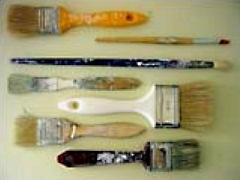Mouthful of Systematic Innovation
The Six Thinking Tools for Predicting New Products
Published in TheMarker magazine, August 7, 2000
Author: Ari Manor, CEO, ZOOZ
A. The Proof is in the Pudding
This article presents a method for developing new products using simple manipulations of components and variables related to an existing product. The theory behind this approach, known as SIT (Systematic Inventive Thinking), is explained elsewhere (1-3). Since 1995, many companies have applied the SIT method all over the world, and invented and launched dozens of successful new products and services.
One nice thing about SIT is that it focuses on the product itself (rather than on market needs). This approach may seem misguided, but it works like magic resulting in:
1. Very fast, inexpensive, straightforward, in-house generation of ideas.
2. Highly original ideas that could not be predicted by the customers.
3. Very feasible ideas requiring simple changes in the product.
4. New products that receive high scores on concept and market tests.
5.
Prediction of 80% or more of the new upcoming products.
The SIT approach for new product development includes 6 different types of product manipulations called "thinking tools". In this article I outline these 6 thinking tools, while focusing on one simple product - a toothbrush.
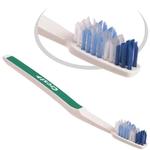
A unique toothbrush
For each thinking tool I will explain the manipulation pattern, show examples of existing toothbrushes that share this pattern, and use it to predict one or more new toothbrushes.
___________________________________________________
SIT is a derivative of the ARIZ method (see 4-5). You may be familiar with the TRIZ method, another derivative of the ARIZ method.
___________________________________________________
B. "Adding a Dimension" using Toothbrush Variables
"Adding a Dimension", the first thinking tool that will be demonstrated here, is also the most powerful one. It often results in more ideas than all the other thinking tools combined.
"Adding a Dimension" focuses on the product variables (e.g. - toothbrush length, color, etc.) and the environmental variables (e.g. - type of toothpaste, age of user, etc.). When using this thinking tool, one tries to form a new dependency between two variables related to the product.
This pattern is evident in many existing toothbrush innovations, including the following (the variables are
underlined):
1. A triangular head (the width decreases with the length) - convenient for reaching difficult to reach areas).
2. Active tip (longer and tougher bristles at the tip of the head) - to reach around back teeth.
3. Two types of bristles (tougher in the center, softer on the
sides) - reducing the risk of gum damage.
4. Indicator Bristles (with a blue color that fades away with
time)
- indicating when to replace the toothbrush (and increasing
toothbrush consumption several folds!).
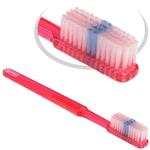
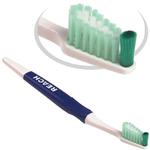
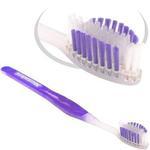
Indicator Bristles | Two bristle types | Triangular head, active tip
Future toothbrush innovations following this pattern (Adding a Dimension) may include:
1.
Toothpaste hole (bristle length is shorter at the head center) - for better toothpaste grip (Did your toothpaste ever fall off the toothbrush? Did you ever have to wipe it off the floor?).
2. 45° degree angle of bristles (length of bristles gets shorter with the
width of the head) - for encouraging brushing in the recommended angle.
3. No-usage Alert (handle turns red after 12 hours of not using the brush) - indicating poor hygiene habits, and increasing consumption.
Some of the above and of the following innovations may already be invented (I'm not a toothbrush expert). However, experts can easily add many other dimensions and generate dozens of ideas using this thinking tool.
To read the second part of the article - click here.
Go to: Part I | Part II | Part III | Part IV
